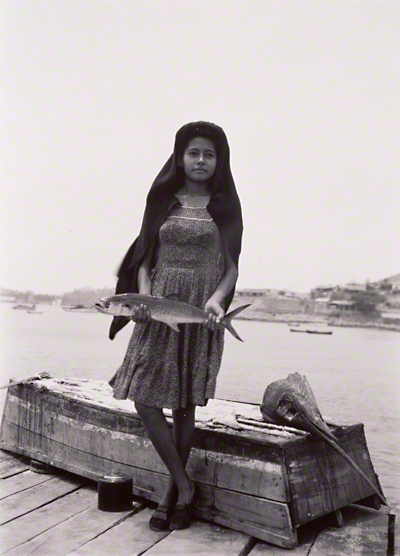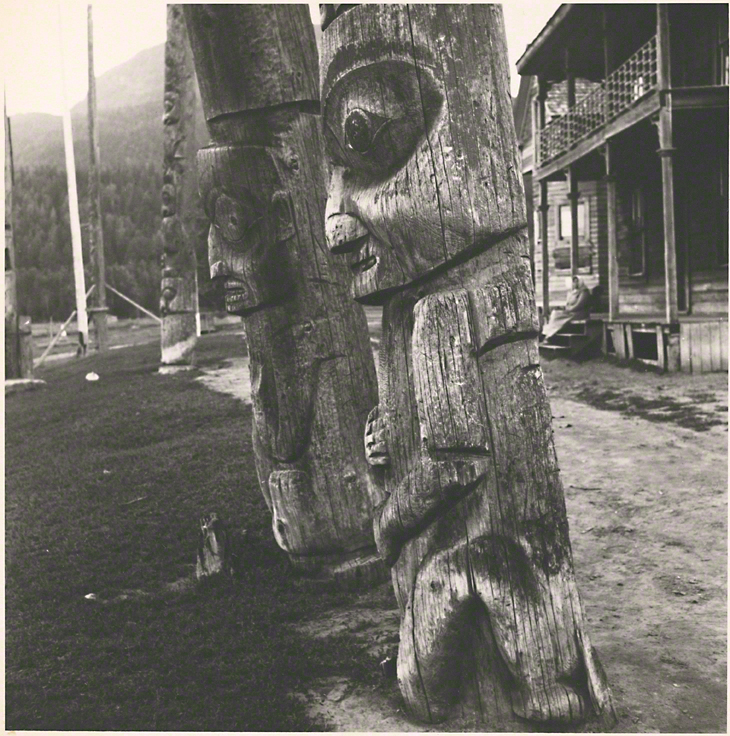Photography and Illustration

A Fish Called Sierra (Un pez que llaman Sierra), 1944, Manuel Alvarez Bravo (Mexican, 1902–2002), gelatin silver print, 9 7/16 x 6 7/8 in. J. Paul Getty Museum, 2003.507.18. Gift of Daniel Greenberg and Susan Steinhauser. © Colette Urbajtel/ Archivo Manuel Álvarez Bravo, SC
Following the Mexican Revolution of 1910, legislators sought to unite an ethnically, culturally, and socioeconomically diverse country through a comprehensive narrative of national identity that exalted the uniqueness of Mexico's indigenous heritage. As part of this government effort known as indigenismo, anthropology and archaeology were encouraged as a means of studying and promoting Mexico's pre-Columbian past.
For Dyn artists, photography and illustration of ethnographic objects was a means of both documenting cultures and creating original works of art. Ethnographic photographs associated with the indigenismo movement, along with those that documented the Pacific Northwest, also served Dyn artists as source material for their paintings and drawings.
Manuel Alvarez Bravo and Doris Heyden published a number of photographs in Dyn. The then-married couple drew on the tradition of ethnographic photography and took the lives and landscapes of Mexico's indigenous peoples as their subject. But the work they produced is neither documentary realism nor picturesque idealism. Instead Alvarez Bravo and Heyden framed their subjects to produce unsettling juxtapositions, infusing ordinary situations and objects with enigmatic poetic meanings.
For Dyn artists, photography and illustration of ethnographic objects was a means of both documenting cultures and creating original works of art. Ethnographic photographs associated with the indigenismo movement, along with those that documented the Pacific Northwest, also served Dyn artists as source material for their paintings and drawings.
Manuel Alvarez Bravo and Poetic Ethnography
Manuel Alvarez Bravo and Doris Heyden published a number of photographs in Dyn. The then-married couple drew on the tradition of ethnographic photography and took the lives and landscapes of Mexico's indigenous peoples as their subject. But the work they produced is neither documentary realism nor picturesque idealism. Instead Alvarez Bravo and Heyden framed their subjects to produce unsettling juxtapositions, infusing ordinary situations and objects with enigmatic poetic meanings.Eva Sulzer and Ethnographic Landscapes
During an expedition through the Pacific Northwest with Paalen and Rahon in the summer of 1939, Eva Sulzer took numerous photographs of the landscapes and indigenous artwork they encountered. These appear in every issue of Dyn and are presented in two distinct contexts: as illustrations to scholarly texts and as autonomous artworks.
Publications
Farewell to Surrealism: The Dyn Circle in Mexico
Annette Leddy and Donna Conwell
Introduction by Dawn Ades
Annette Leddy and Donna Conwell
Introduction by Dawn Ades
Surrealism in Latin America: Vivísimo Muerto
Edited by Dawn Ades, Rita Eder, and Graciela Speranza


